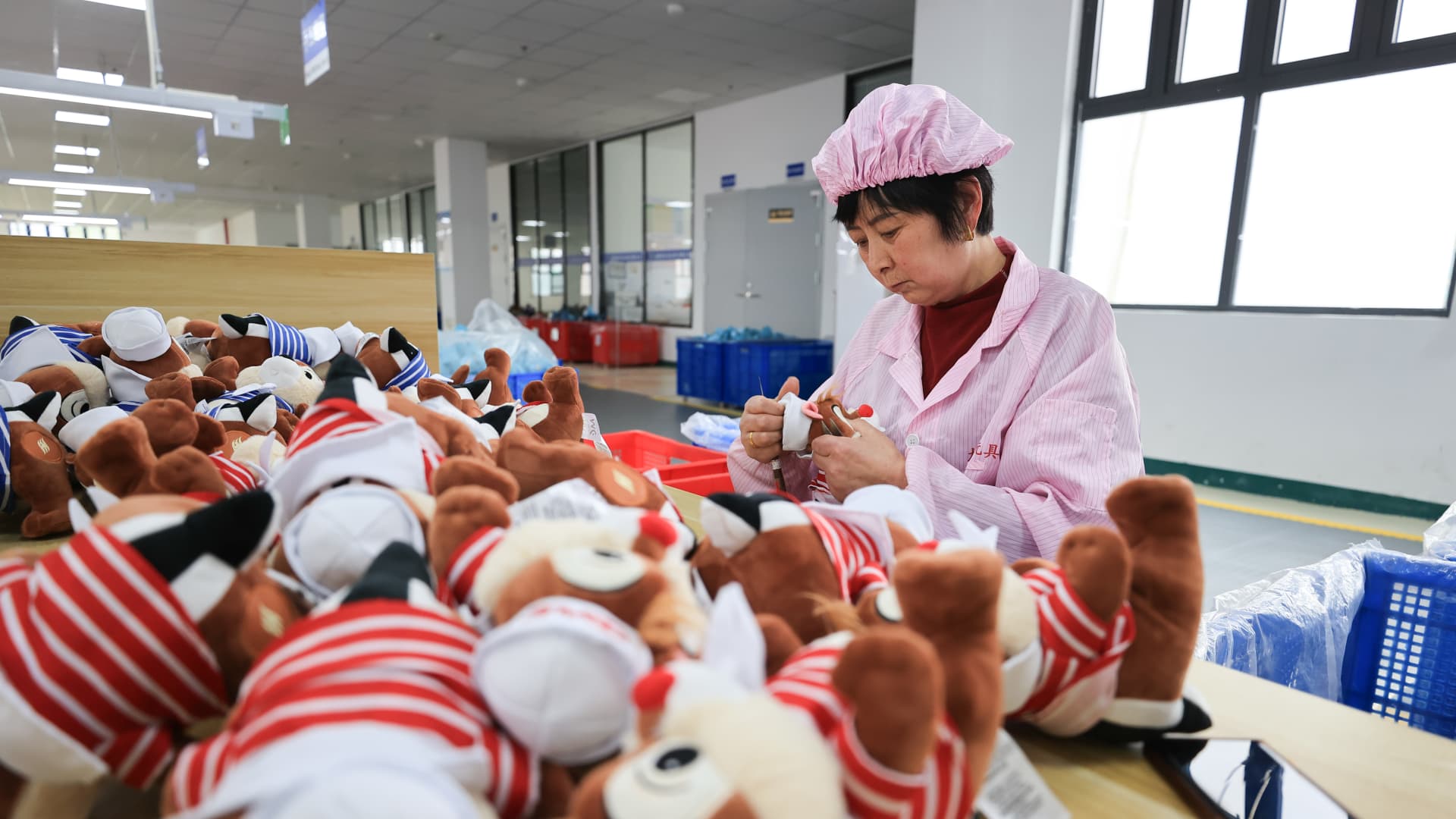LIANYUNGANG, CHINA – APRIL 11, 2025 – A worker produces plush toys for sale to countries along the Belt and Road at a toy company’s production line in Lianyungang, Jiangsu province, China on April 11, 2025.
Cfoto | Future Publishing | Getty Images
China’s manufacturing activity fell more than expected to a near two-year low, sliding into contractionary territory in April as the escalating trade war with the U.S. hurts bilateral trade.
The official purchasing managers’ index came in at 49.0 in April, according to data from the National Bureau of Statistics on Wednesday, falling below the 50-level threshold, which determines expansion from contraction, for the first time since January.
That reading missed the analysts’ expectations for a 49.8 contraction in a Reuters poll, marking a notable slowdown after China’s manufacturing activity grew at its fastest rate in a year in March, as exporters front-loaded outbound shipments to avoid higher duties.
In a similar vein, Caixin/S&P Global manufacturing PMI slowed to 50.4 in April from 51.2 in the previous month, indicating a modest expansion and better than the analysts’ forecast of 49.8.
The statistics bureau’s PMI for non-manufacturing activity, which covers services and construction, fell modestly to 50.4 in April from 50.8 in the prior month.
U.S. President Donald Trump has imposed cumulative new tariffs of 145% on Chinese goods this year, with most of these tariffs taking effect in April, following his “liberation day” announcements. This brings the total tariffs on some products from China to as high as 245%, according to a fact sheet released by the White House.
China has retaliated with new levies of 125% on U.S. goods before decrying Washington’s exorbitant tariffs as a “meaningless numbers game.”
Trade flows between the two countries have been “severely disrupted” following the tit-for-tat tariff hikes, Chetan Ahya, chief Asia economist at Morgan Stanley, said in a note Monday, with the number of cargo-carrying container ships departing from China to the U.S. falling sharply in recent weeks, resulting in a year-on-year contraction.
Despite little evidence of progress being made in trade negotiations between the two countries, recent reports suggested some tariff relief on the ground as both governments sought to blunt the economic impacts of punitive tariffs.
China has reportedly granted tariff exemptions to certain U.S. goods, including pharmaceuticals, aerospace equipment, semiconductors and ethane imports.
On Wednesday, Trump signed an executive order exempting foreign car and parts imports from additional levies, following the rollback of tariffs on a range of electronic products, including earlier this month.
Still, Nomura estimates that around 2.2% of China’s gross domestic product will be directly impacted by the 145% U.S. tariffs, and around 9 million jobs in China’s manufacturing sector are directly exposed to Trump’s tariffs.

In an economic policy setting meeting last week, Chinese authorities pledged to support businesses and workers most affected by the impact of the massive U.S. tariffs, while signalling an urgency to implement more active fiscal policies and “moderately loose” monetary policies to prop up the economy.
While a slew of major Wall Street banks have slashed their China GDP forecasts for the year, citing trade headwinds, Beijing has reiterated it is “fully confident” of achieving this year’s lofty goal of “around 5%.”
“Offsetting impact of tariffs will probably require doubling stimulus this year,” said Dan Wang, China director at risk advisory firm Eurasia Group, who expects China’s exports to the U.S. to decline by half as a result of the ongoing trade war.
Beijing will need to deploy at least an additional 2 trillion yuan in fiscal spending to counter the 2% loss in GDP, Wang said.
While the Trump administration insisted trade negotiations with Chinese officials were underway, Beijing has repeatedly denied that it was in any talks to resolve the tariff disputes with Washington.
This is breaking news. Please refresh for updates.





